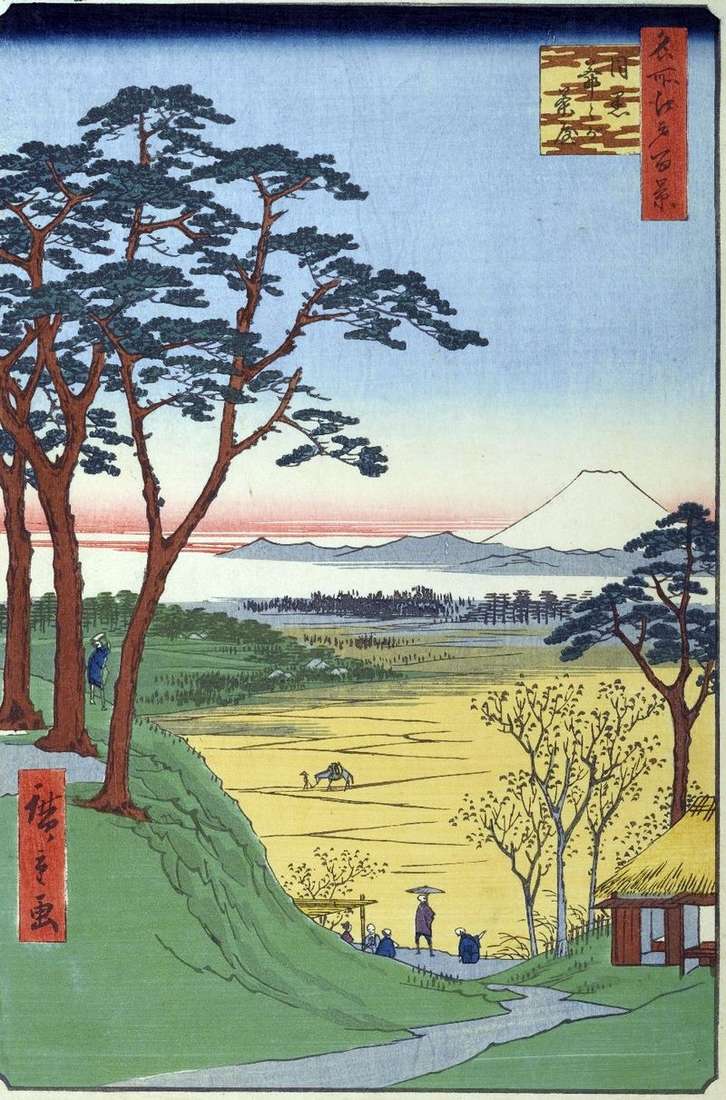
From the elevation, passing along the Megurogawa, a view of the rice fields and Mount Fuji was opened. Here was a famous temple dedicated to Fudo-Meo. The area of Meguro was also famous for the fact that Mount Fuji was well visible from any point of it. On the slope of Tiayazak, among the Japanese red pines was a tea pavilion, which was called Fujimityaya. He had a beautiful view of Fuji, so the tea-room got such a name. It is also connected with the history of visiting the tea third shogun Iemitsu during his falconry. Iemitsu stayed here for a while and was serviced by old spouses. In memory of this visit, the tea house began to be called “Dzidzigataya”.
In the engraving it is depicted on the right. From her opened a view of the flooded rice fields, which crosses the traveler with a horse. On the horizon, at the foot of Fuji, Tandzawa mountain range is seen. On the left in the foreground is Mount Oyama. The fog line in the foothills of Fuji in the late edition is as bright as the mountain itself. The clothes of travelers, admiring the beautiful view of Fuji, are painted in darker colors and stand out against the backdrop of the paddy rice fields.
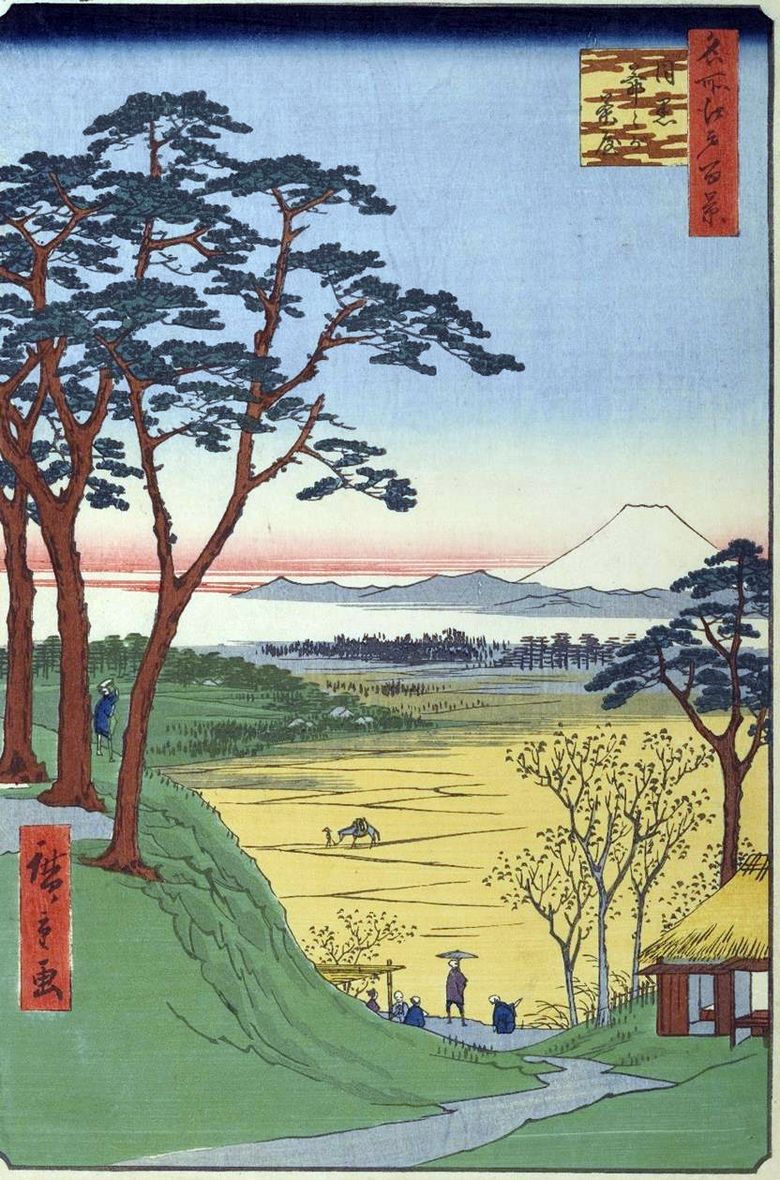 Dzijigataya Tea Hall (Boutique du grand-père) à Meguro – Utagawa Hiroshige
Dzijigataya Tea Hall (Boutique du grand-père) à Meguro – Utagawa Hiroshige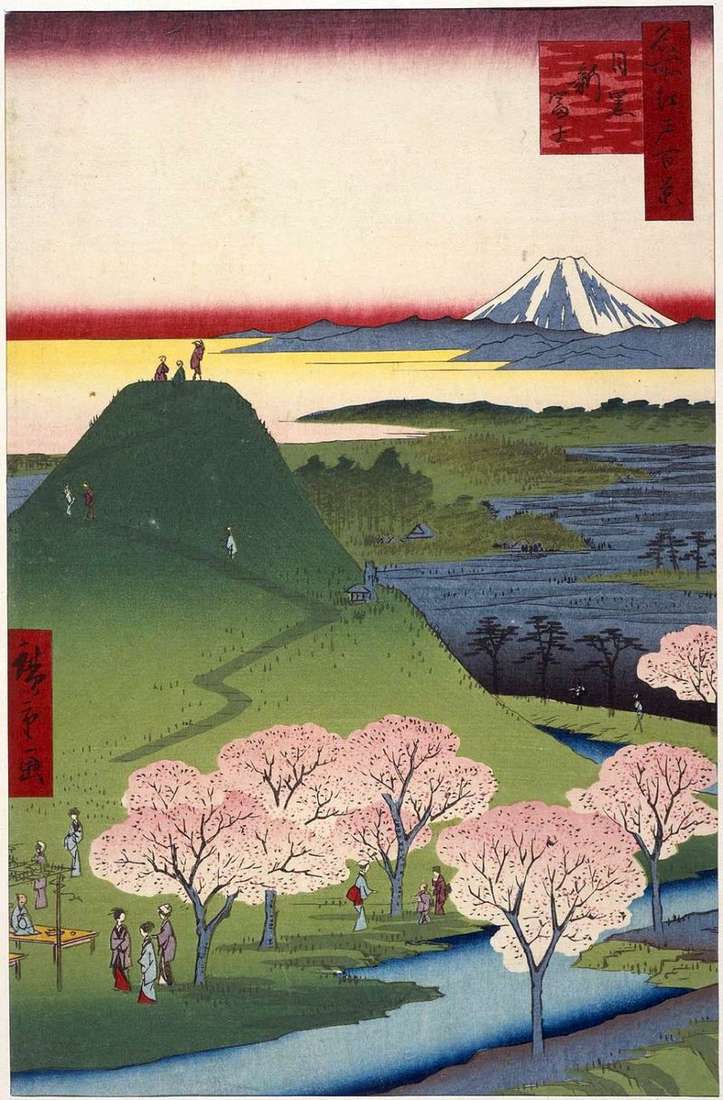 Meguro, New Fujiyama by Utagawa Hiroshige
Meguro, New Fujiyama by Utagawa Hiroshige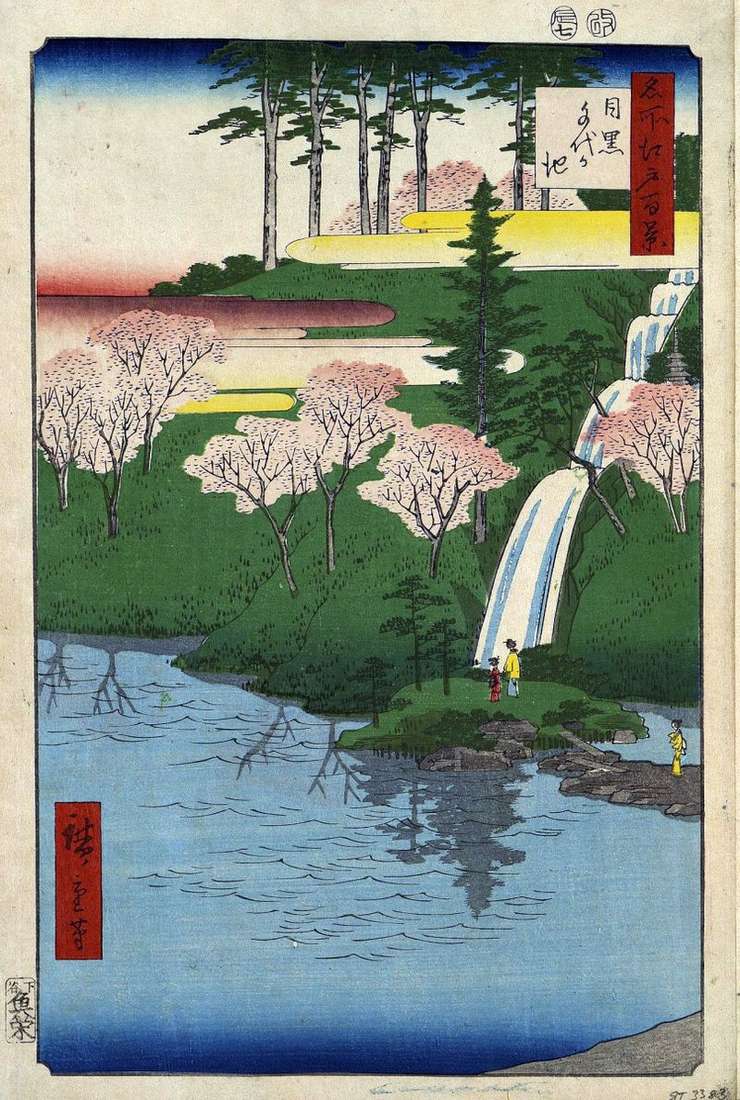 Meguro, pond Tiegaike by Utagawa Hiroshige
Meguro, pond Tiegaike by Utagawa Hiroshige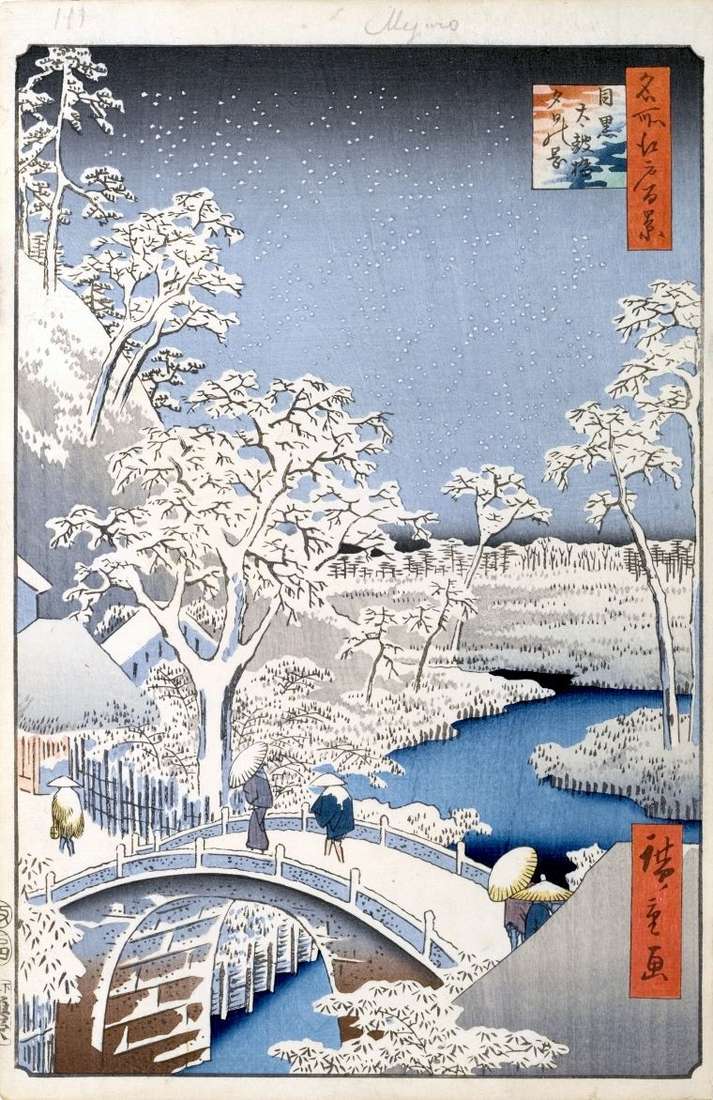 Yuhinooka hill and Taykobashi bridge in Meguro by Utagawa Hiroshige
Yuhinooka hill and Taykobashi bridge in Meguro by Utagawa Hiroshige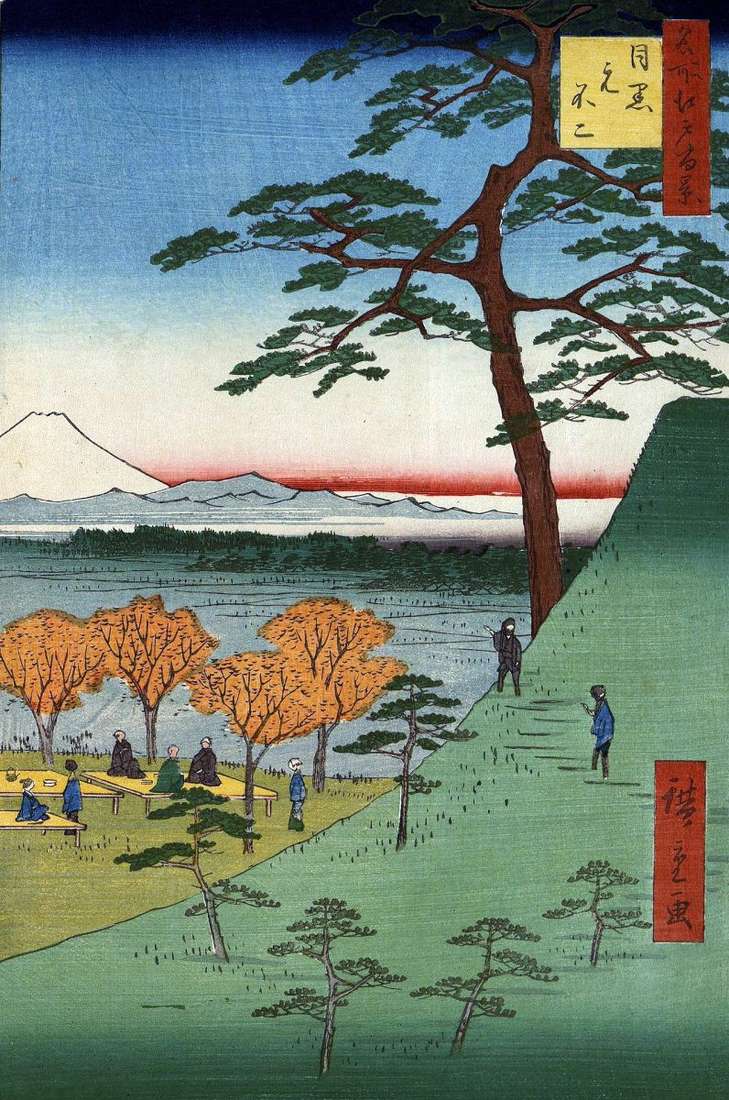 Motofuji in Meguro by Utagawa Hiroshige
Motofuji in Meguro by Utagawa Hiroshige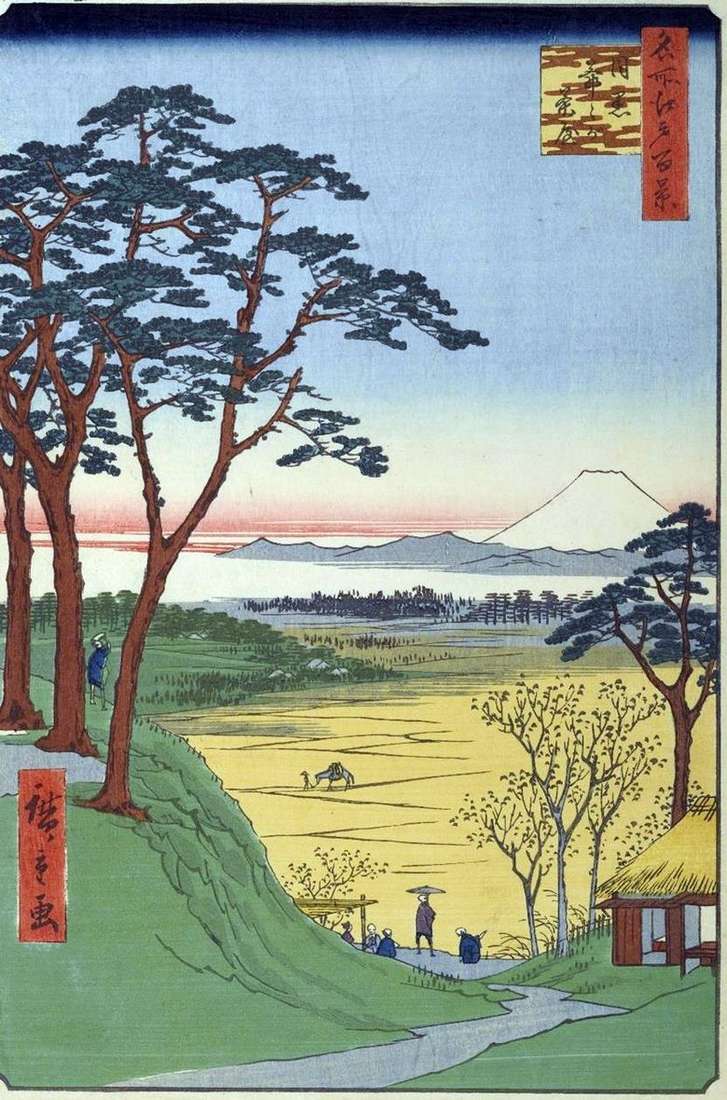 Té Jitzygatyaya (“La tienda del abuelo”) en Meguro – Utagawa Hiroshige
Té Jitzygatyaya (“La tienda del abuelo”) en Meguro – Utagawa Hiroshige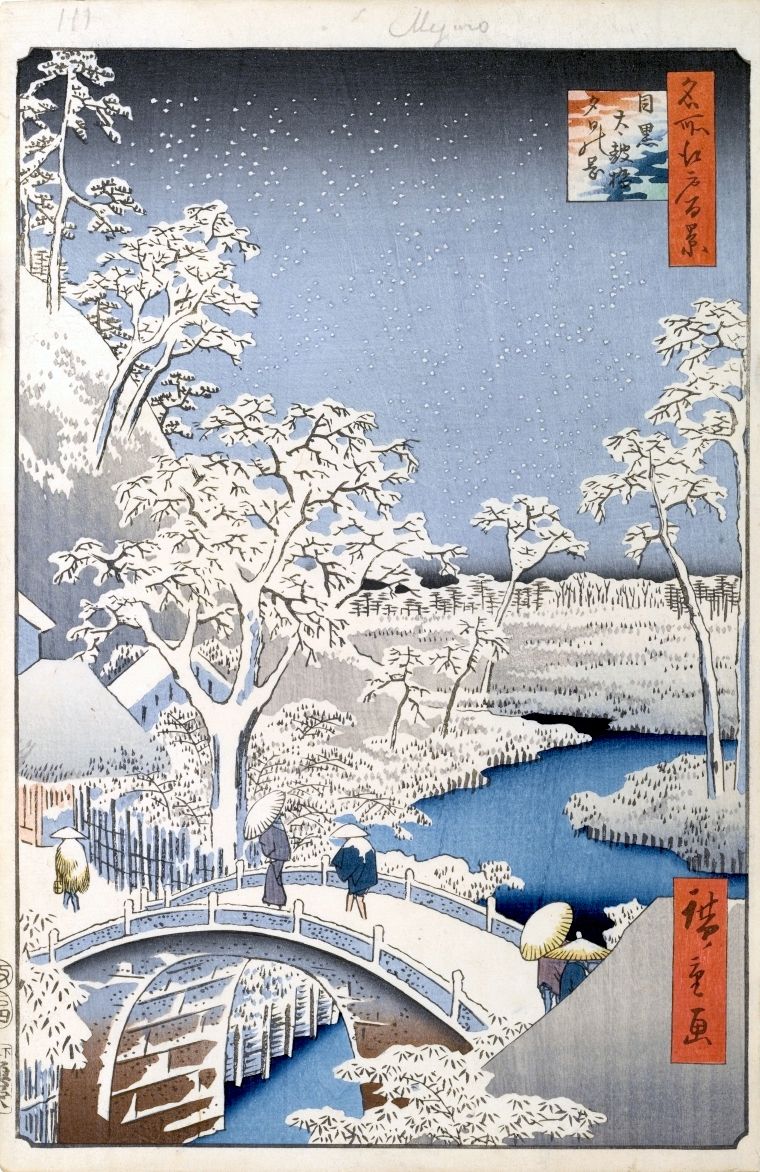 Yuhinooka Hill et le pont Taikobashi à Meguro – Utagawa Hiroshige
Yuhinooka Hill et le pont Taikobashi à Meguro – Utagawa Hiroshige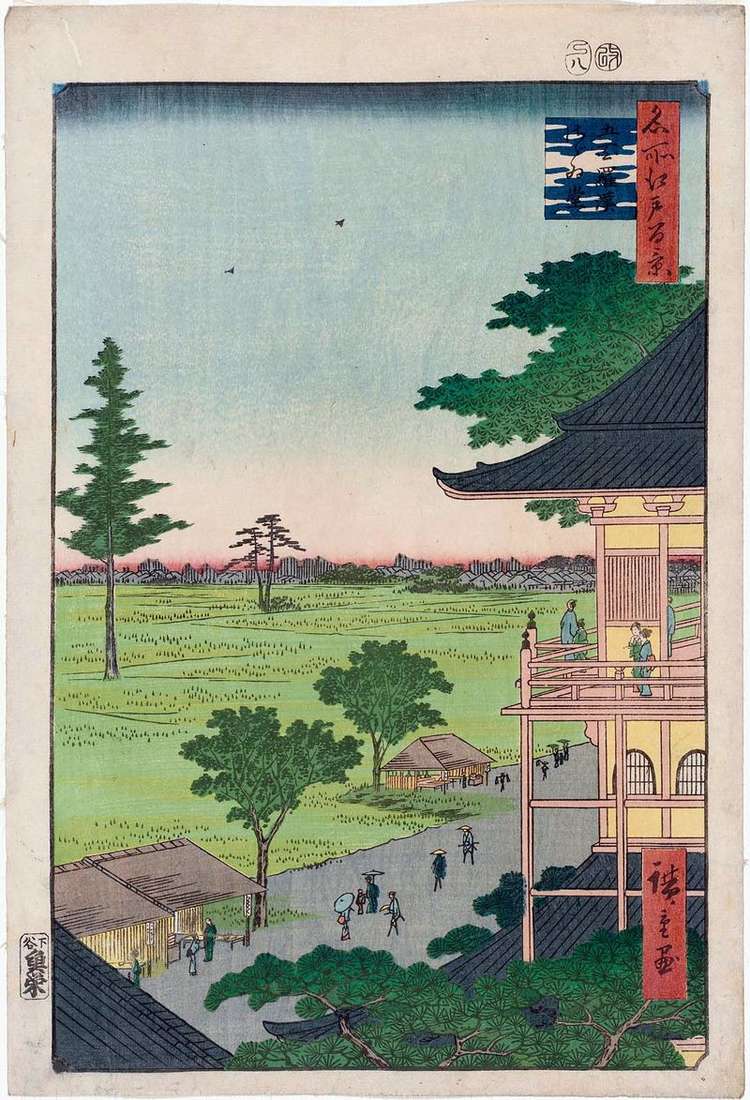 Temple of Sadzae Monastery of Gohya-kurakan (Five hundred Arhats) by Utagawa Hiroshige
Temple of Sadzae Monastery of Gohya-kurakan (Five hundred Arhats) by Utagawa Hiroshige